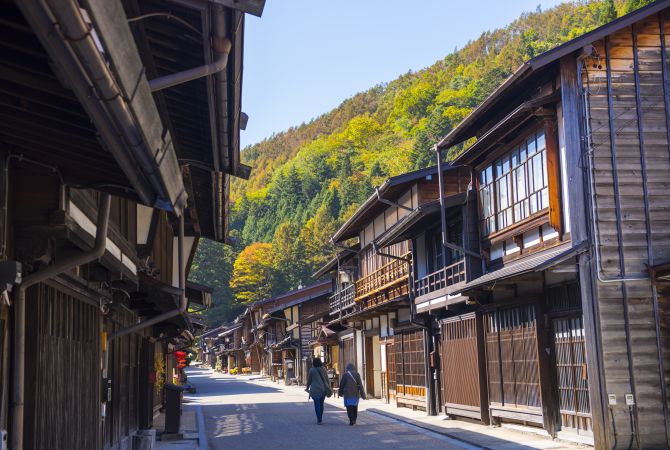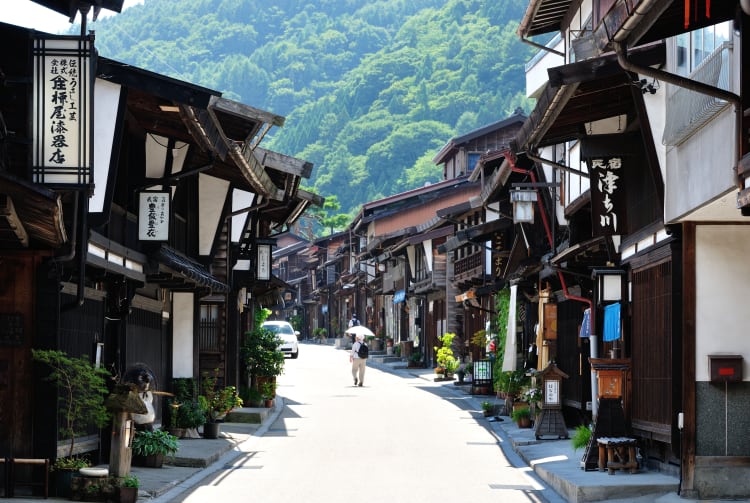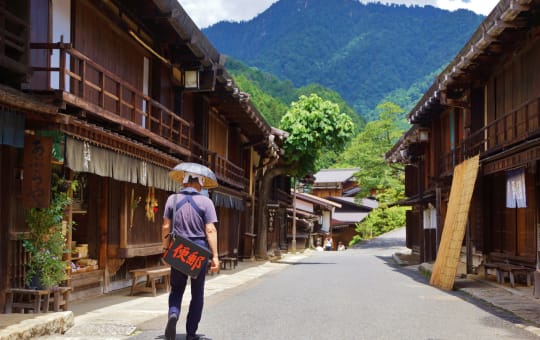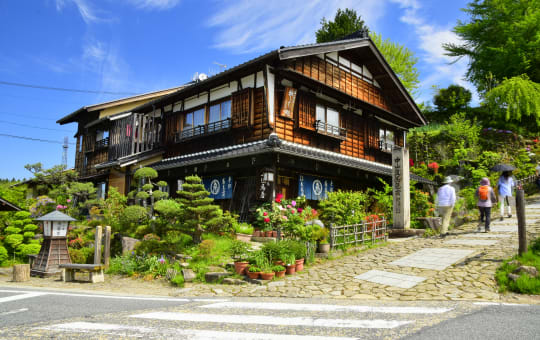Walk this historic trade route to glimpse Japan of a bygone era
Connecting Tokyo and Kyoto during the Edo period (1603-1867), the best-preserved portion of the Nakasendo Highway is a picturesque trail through the mountains that runs through the Kiso Valley in southwestern Nagano Prefecture . Wander the trail and stop at one of its "post towns," resting stops for fatigued travelers, to glimpse Japan as it was in the past.
Don't Miss
- Visit historic Joshoji Temple in Suhara
- Explore the checkpoint station at Kiso Fukushima
- Hike over the Torii-toge Pass to Narai, once the wealthiest post town on the Nakasendo Highway
How to Get There
The Nakasendo Highway can be reached by train or highway bus.
By shinkansen, head to Nagoya before transferring to the JR Shinano Limited Express.
Alternatives from Tokyo include taking limited express trains such as the JR Asuza via Shiojiri Station before making further transfers along the Kiso Valley route.
The famous post town of Magome in Gifu Prefecture is the most common starting point for accessing the Nakasendo Highway. Reach Magome by bus via Nakatsugawa Station.
For the adventurous, the walk between Magome and Tsumago takes about 2 to 2.5 hours.
Signage is in English and Japanese, and luggage forwarding services are available.
Quick Facts
The roadway that became the Nakasendo Highway dates from the seventh century
It was originally called the Kisokaido before becoming Nakasendo in the early 1600s
Locals refer to this highway as the Kisoji
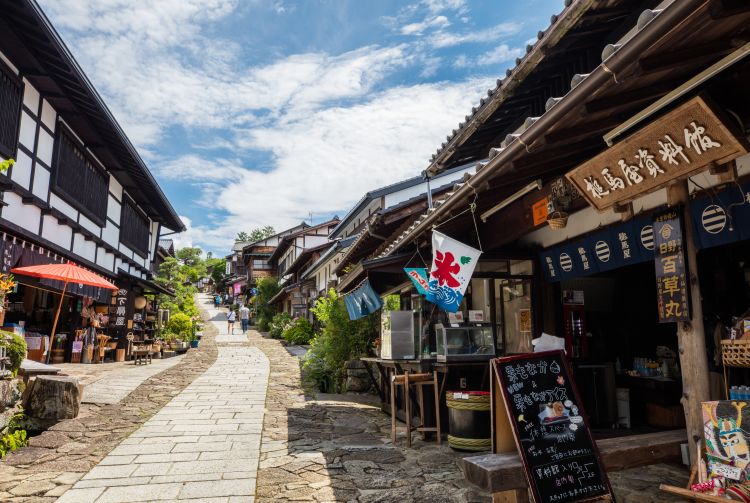
Hike the Nakasendo Highway for a taste of old Japan
From the early 1600s until the late 1800s, the Nakasendo Highway was an important trade route connecting Japan's capital Kyoto to Edo-period Tokyo.
Along the way, there were 69 post towns. These rest stations, spread out every 10 kilometers or so, provided accommodation and entertainment for merchants, samurai, wandering monks, and other fatigued travelers.


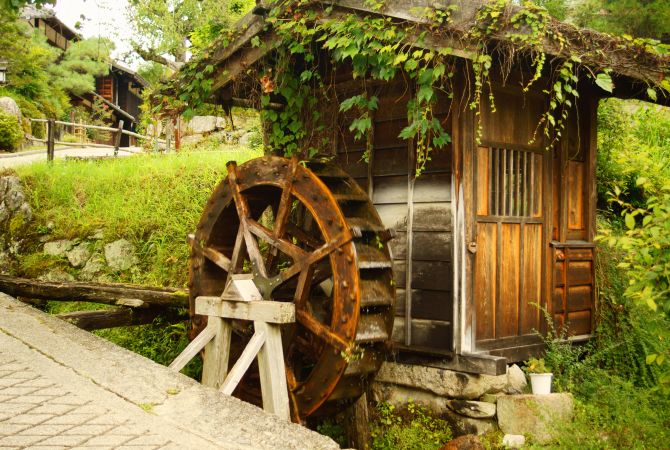
Where time stood still
While most of the Nakasendo and its post towns have long ago succumbed to modern development, some portions of the Kisoji area remain almost untouched. Whether remodeled or quaint, the area allows an up-close look at life in rural Nagano .
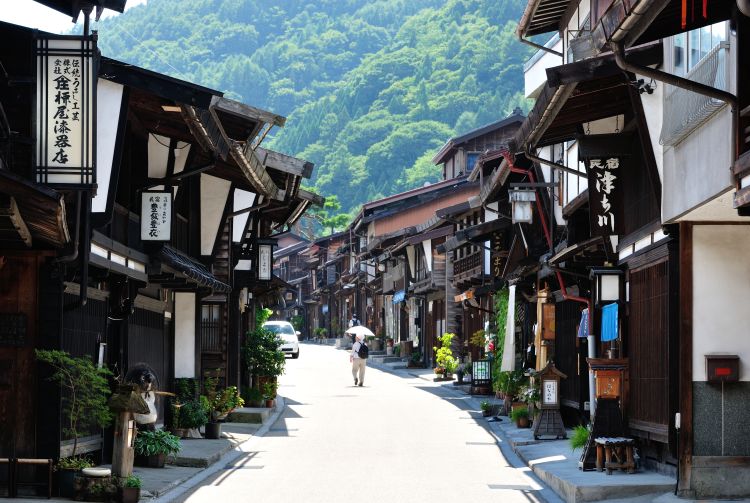
Conquering the Nakasendo
You can walk the entire length of the trail in four to five days, but some highly motivated hikers do it in three. While you can obviously walk in either direction, many prefer to start in Magome at the valley's southern entrance and proceed north, as more of the journey is downhill. You'll pass a number of train stations along the way, so if you tire of walking, you can always take the train to the next town.


Meet Kiso's many Jizo
A Buddhist Bodhisattva and roadside guardian, Jizo statues are commonly found along this path as are Dosojin, a Shinto icon shaped like a human couple, that's believed to protect travelers.


Traveling from Magome to Tsumago
These two post towns are two of the best-preserved stops on the entire Nakasendo Highway. Their main streets lined with beautiful wooden houses. The scenic three-hour, nine-kilometer hike between them takes you from Gifu Prefecture into Nagano Prefecture and the Kiso Valley.



From cedar to bamboo
The leg of the Nakasendo Highway between Tsumago and Suhara covers a variety of terrain and brings you through some lovely Japanese countryside, including forests of Japanese cedar and towering bamboo groves. The trek is rather long, 23 kilometers in all, but well worth the effort. The journey passes through the post towns of Midono and Nojiri before reaching Suhara if you decide you want to finish early and catch a train for Kiso Fukushima. Once you reach Suhara, be sure to check out the peaceful Joshoji Temple, founded in the 14th century.


